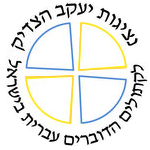Migrant children’s photos in the Knesset
An exhibition of photographs entitled “Dreaming to live without stigmas” has arrived in the Knesset reported YNET on November 22, 2016.

Read the article on YNET here
High school children, whose parents come from 51 countries, painted their faces and were photographed for a special project, “Identity resonances” (a play on words as the word resonances rhymes with the word “documents”, referring to the identity documents that these children do not have). This exhibition will also show at the Committee for the Rights of the Child. “I dream of being happy, without racism, and to know that I am wanted here,” of the pupils said. The creators of the project: “the pupils are transparent in our society on the basis of the color of their skin”.
“In the future, I dream of being happy, of raising a family, enjoying every moment’ and of course to live an easy life – without racism, humiliations, or stigmas – with the knowledge that I am wanted here”. This is what Joanna Rose Igoman (16), the daughter of migrants who arrived from Jamaica and the Philippines, wrote. She studies in the 11th grade in Bialik Rogozin, a school in south Tel Aviv.
The words of Igoman are part of the words of explanation that are attached to her photo, exhibited as part of the exhibition “Identity resonances” that was created by the pupils of the school. It will be part of the Committee for the Rights of the Child of the Knesset to mark the International Day of the Child.
The children of the school, situated in the south part of Tel Aviv, are mostly children of foreign citizens who have come from 51 different countries. The children were photographed for the exhibition after they painted their faces with colors that were mixed from the spectrum of colors that were laid out before them and they mixed the colors to march the color of their skin as they see it.
Another pupil who participated in the exhibition is Golan Sing, who is 16 years old, and he too is in 11th grade in the school. “I dream of making a living in the future in the sphere of design because I really like different kinds of creative work. I really want my parents to be proud of me and that they will know that I have the possibility to succeed in this country,” wrote Sing, who was born in Israel to migrant workers who came to the country from Indian in 1996. “My parents came to the country and decided to get married and bring me into the world,” explained Sing. “My parents perceived that in this country I have the chance of a better life”.
In an announcement that the creators of the project, Adam Gilboa, an architect and teacher in the school, and Yael Gavrieli, an artist and photographer, published, it was explained that the exhibition “tries to point to the independent perception that a person might have of him or herself and how the pupils are transparent in Israeli society because of the color of their skin.” It was also written there that “the project tries to trace the process by which a person forms his or her self perception’ like a painter who puts down layers of paint, one on top of another, with the aim of arriving at a final and precise expression. “Identity resonances” is an attempt to reflect on the processes of developing an identity among the children of migrant workers and asylum seekers”.
According to the data of the Population and Migration Authority, in Israel today there are 174 thousand migrant workers, including those who reside legally and those who are not legal. In addition, there are about 91 thousand tourists who stayed behind in the territory of the country after their visas expired and thus are among the illegal residents. To them must be added about 45 thousand asylum seekers whom the state cannot expel because of the regulations of international law.
According to estimates, in Israel today there are thousands of foreign children whose status is irregular. In many cases, these children suffer in a context where conditions are dire in their homes or in the structures in which they are taken care of and they are not eligible for health or welfare services.
“A child is a child is a child, therefore we chose to give a special place to the children of migrants in the Bailik Rogozin school in Tel Aviv in this impressive exhibition,” the chairperson of the Committee for the Rights of Children in the Knesset, Dr. Yifat Shasha Bitton, told YNET. She was one of the initiators of the exhibition.
“Within the context of trips of the Commission, I have visited the baby warehouses in south Tel Aviv and I was exposed to the distress and the sub human conditions in which they live. There is a horizon to this reality but the challenge is to see that this horizon is not temporary but rather a part of the process that will enable these children to live in a more sane reality than the one they know right now.”












 Ordinations of the New Bishop for the Latin Patriarchate
Ordinations of the New Bishop for the Latin Patriarchate New Bishop in the Latin Patriarchate
New Bishop in the Latin Patriarchate Midnight Mass in Bethlehem 2023
Midnight Mass in Bethlehem 2023 Coming Tuesday: The Day of Fasting For Peace
Coming Tuesday: The Day of Fasting For Peace Pizzaballa: Appointment as Cardinal Shows Jerusalem’s Vocation to Dialogue
Pizzaballa: Appointment as Cardinal Shows Jerusalem’s Vocation to Dialogue Archbishop Pierbattista Pizzaballa Elevated to the Rank of Cardinal
Archbishop Pierbattista Pizzaballa Elevated to the Rank of Cardinal Shooting in Christian School in Nazareth
Shooting in Christian School in Nazareth